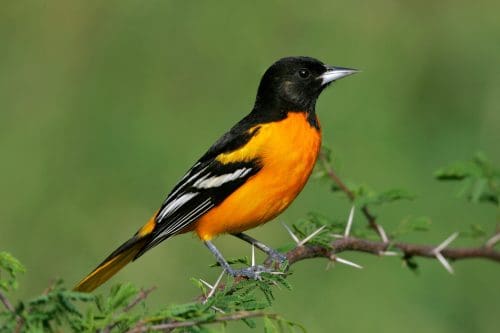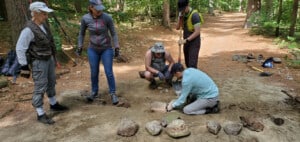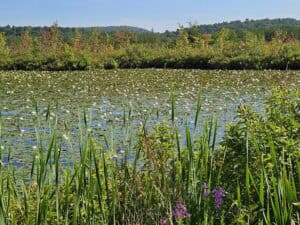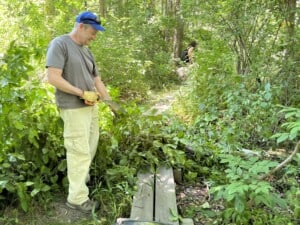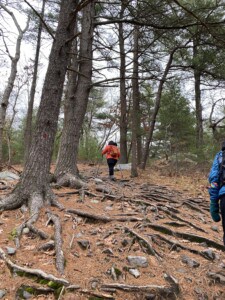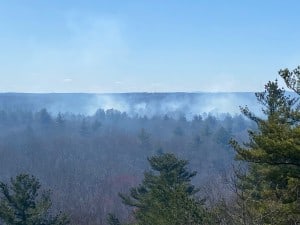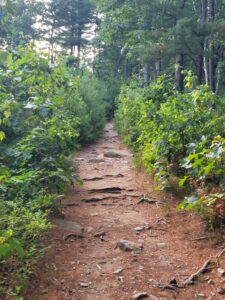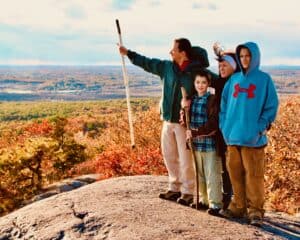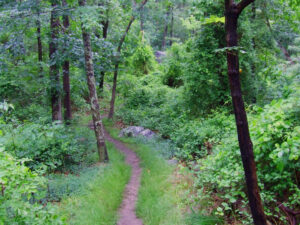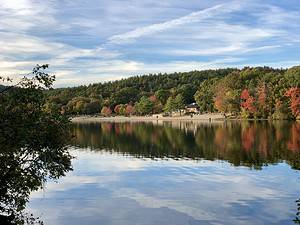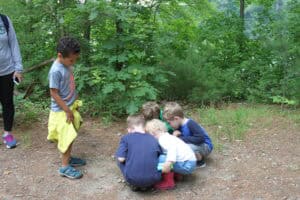By. Larry Meyer
Baltimore Orioles come to New England like a circus comes to a town. They are brightly costumed, loud, well-traveled, energetic, entertaining, conspicuous, and here only to put on a show. Not being a resident, like a circus, they quit New England when it doesn’t suit them anymore and that’s when they’ve extracted what they need: a climate, time, space, food, materials and habitat to mate, nest, incubate, fledge and feed 2-4 new orioles.
Milton’s Turner’s Pond is where I’ve watched the annual spring Oriole circus for many years and it’s there I have learned about it. Turner Pond is typical of the habitat Orioles prefer to arrive at the end of their annual northward spring migration: open parkland centered on water. Not deep woods or spruce forest. What males are looking for – and it’s the bright males who arrive first – is food and food means caterpillars and caterpillars eat the leaves of deciduous trees. Don’t bother to look for Orioles until trees are leafing out.
At Turner Pond, that has averaged the last week of April through the first week of May.
What do male orioles look like and how do you find and identify them? With its dark black back and bright orange belly, the oriole is not easily confused with any other bird of its size. So it’s easy to identify them but a little harder to find them. Being energetic, if not frenetic, and very fast flyers, orioles don’t pose quietly as they do in bird guides. I invariably find the first orioles by hearing them. Orioles announce their arrival with a loud “squeaky wheel” call. If you hear a 4-6 beat squeaky bicycle wheel crying out for 3-in-1 oil, that’s an oriole.
Its then you’ve got to look for it. Tilt your head back.
A few clues. Orioles fly very fast, straight and direct. Your first sight of the oriole you’re looking for is likely to be a blur with a flash of orange. Try to follow the blur to where it’s going, most likely the top of a tree with leaves, where with any luck, it will grab fast to a passing branch, come to a screeching halt and start to eat bugs.
Food and flight tell you where you needn’t look for orioles; on the ground browsing (like a robin) or in evergreens (like grackles). In fact up to 15 feet above the ground is pretty much out as oriole habitat. They are definitely a high wire act.
Within 10 days of May 1st I have usually been able to determine there are 5-8 males around the trails about Turner Pond. The count is rough and I can never be sure my count is not duplicating. They fly fast and the two I’ve seen on one side of the pond could be the same I’ve seen on the other side a few minutes before. They are also still noisy and making the squeaky wheel sound. Females (drab gray and streaky brown) are starting to arrive. As females arrive and squeaky wheels go silent, it becomes time to start looking for nests. That’s about May 10.
Orioles’ nests and where they locate them are very distinctive. Neither can be confused with any other bird. The nest is a basically a woven bag, like a sock with a grapefruit in the toe. Where they locate them is the end of a whippy overhanging branch well out from the main trunk of a tree such as a willow or aspen. Trees at the pond’s edge seem to be favorites. Most bird nests favor a solid foundation. Orioles want nests that whip around in the slightest breeze.
I generally find nests (4-8 a season) by following the flight of a male. As it nears a tree that’s a likely nesting tree, it often seems to evaporate from view: he’s flying into or near a nest he’s constructing.
I once read up on the literature of oriole behaviors and discovered there the firm assertion that it’s the female who usually builds the nests. This totally contradicted what I have observed. Nine out of ten times I’ve seen a nest under construction, it’s the male doing the job. I don’t know whether the male has a mate lined up or not. I’m pretty sure I saw one male make a nest that neither he nor she, if there was a she, ever used after it was made. It almost as if the nest was a final plea for a partnership with a mate. Within ten feet of this nest there was another nest which was used by both male and female and did eventually yield fledglings.
Nest construction can take some time, 1- 3 days the literature says. On the other side, I once saw a late arriving male female pair and the female whipped out a nest in about 3 hours in a not very auspicious location. It’s like they knew they were late and she was not messing around any longer.
The incubation period is 11–14 days. By May 10, I have usually found some nests being constructed and start checking for occupancy. Are they being visited by male and females? By May 15, if there is no activity at the nest, the female is usually inside incubating and the males have gone. Male are hardly ever around once incubation starts.
About June 1 is when the eggs are going to hatch. If there are nestlings, then the nests will be very active as both female and male will be collecting and bringing insects to the nestlings almost constantly for 11-14 days. Evidence that nestlings are inside is that the nest often “shivers” from their movements. Very often male and female rotate the job of insect collection and nest protection. The male will fly to near the nest, land, make the squeaky wheel sound and the female will fly out on a food trip. I’ve never see a male enter a nest with hatchlings (doesn’t know how to hold babies I guess), but Moms do often enter.
But there are exceptions to the job-sharing. I once regularly watched a nest where the female vigorously and repeatedly rejected male help. When the male brought a food offering to the nest, she would return to the nest, pick out the insect dropped in by the male, and drop it out of the nest!
Getting right the dates when nests start and when eggs hatch helps your being in on the circus’s last act. Send in the clowns or “the hatchlings leave the nest.” For not every nest I find do I get to see the hatchlings emerge, but usually 2-3 times a season. It’s about 36 days from nest building to fledgling. It’s usually a glorious weather mid-morning mid-June when the clowns come out, frizzy downy feathers, bug-eyed, orange-faced, awkward and bewildered, one at a time, usually one day apart. Remember the nests are hanging out in the middle of nowhere, 10-30 feet above solid ground. The parents keep their distance, if they’re around at all.
Once the fledglings are out, the nest is totally abandoned, although the tree and even the area of the tree may be used again next year. In fact it seems like the whole family makes a rapid exit from the area as I never see orioles, mature or otherwise, around Turner’s after the nesting season is over.
To my great surprise I did once see an oriole family at Tully Lake in central Massachusetts late in the summer in a largely coniferous wood. They were browsing blueberry bushes.
They were getting native enough New Englanders to hang around for the blueberries!

